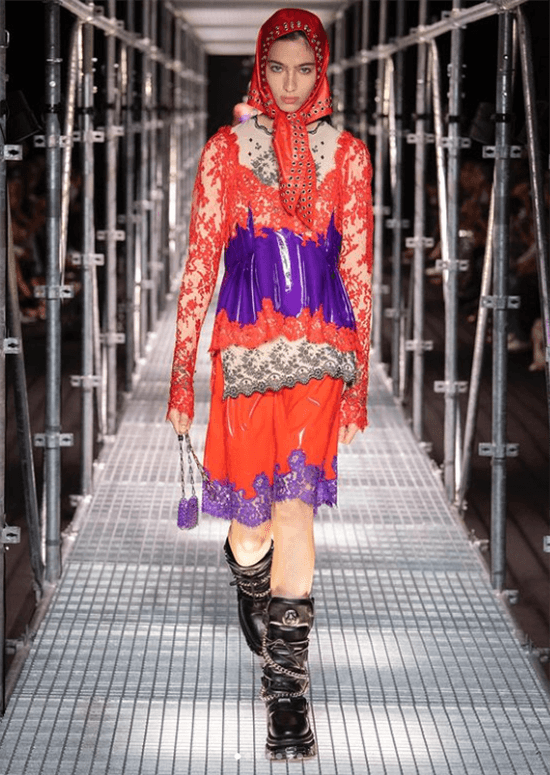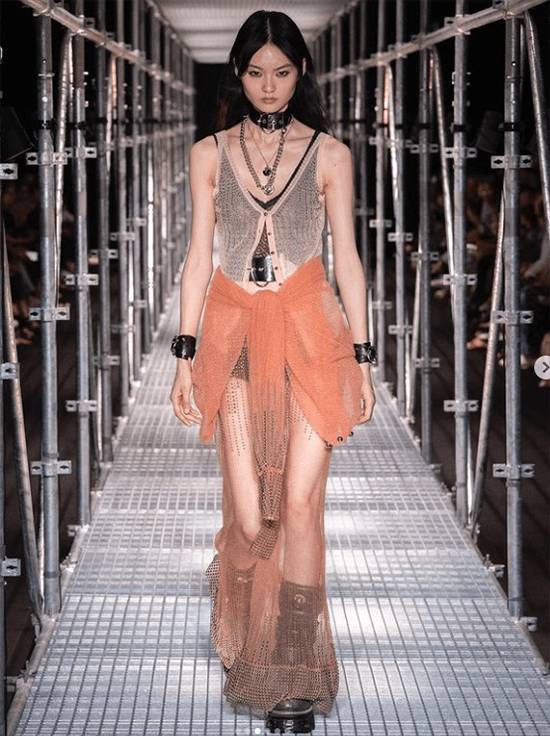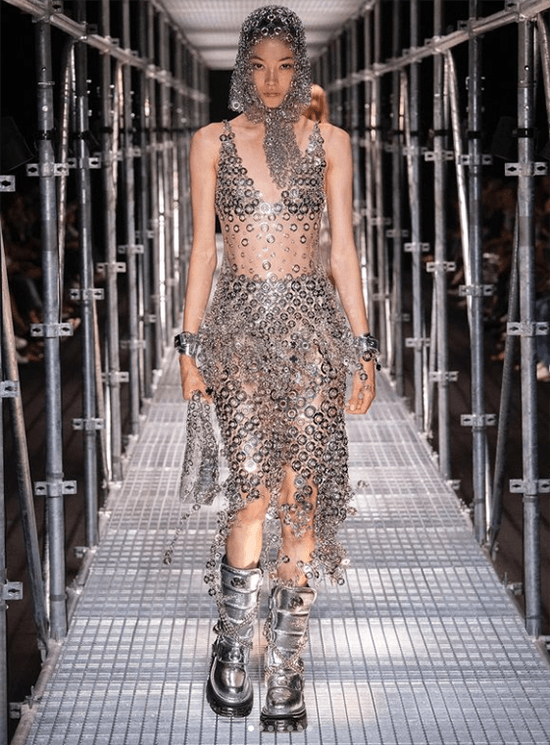Paco Rabanne: The eccentric designer of space-age fashion
Paco Rabanne, the Spanish fashion designer who was known for his space-age fashion and eccentricities, passed away recently in France, where he became famous in the 1960s.
Many may be more familiar with his perfumes, but he was actually one of the key figures to redefine couture. He shook the fashion world to the point that Coco Chanel had to declare, “He’s a metal worker, not a couturier.”
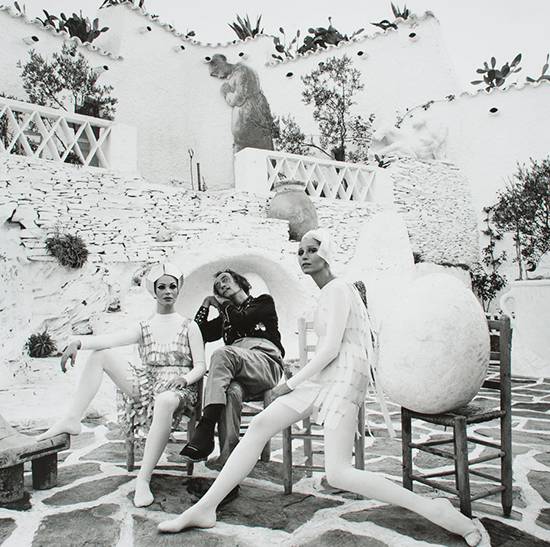
Salvador Dali conceded that “There are only two geniuses in Spain: me and Paco Rabanne.”
The New York Times described him as a “futurist, couturier, mystic, madman, Dadaist, sculptor, architect, astrologer, perfumer, artist and prophet.”
“He made transgression magnetic. Who else could induce fashionable Parisian women to clamor for dresses made of plastic and metal?” says Jose Manuel Albesa of Puig, the luxury group that owns the designer’s namesake brand.

He burst onto the fashion scene in 1966 with a debut collection titled “Manifesto: 12 Unwearable Dresses in Contemporary Materials,” mini-dresses made of discs in metal and Rhodoid, an organic plastic, linked with metal rings that made the pieces kinetic. Paris that was outraged by this subversion of the couture that is firmly rooted in the tradition and craft of sewing.
“Sewing is slavery,” taunted the upstart designer, who preferred pliers to needle and thread. This attitude stemmed from the fact that his mother was working long hours as head of tailoring at the atelier of Balenciaga in San Sebastian.
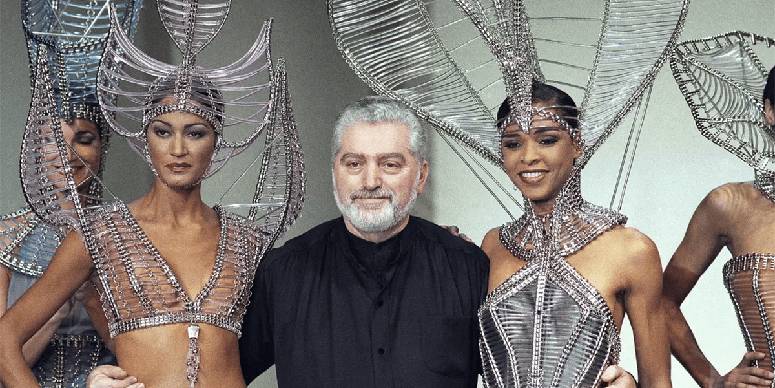
Born Francisco Rabaneda Cuervo in 1934 in nearby Pasaia, Paco’s father was a colonel in the Republican army and was executed by Francoists during the Spanish Civil War. The family fled to a camp near Guernica when the town was bombed in 1937, eventually landing in France, just like Balenciaga.
He studied architecture in Paris in 1951 but was attracted to fashion, paying for his education by designing jewelry and novelty buttons made of metal, leather and even coffee beans for Schiaparelli, Dior, Balenciaga and Givenchy.
He also sketched for them and shoe designer Charles Jourdan, and by the early ’60s fabricated wild accessories for young RTW designers like Emmanuelle Khanh.
Tooling accessories segued to crafting dresses in the same way, resulting in the 1966 collection, which was shown on black and white models who walked barefoot because he could not afford shoes for them.
Although Paris may have rejected his work, New York was ecstatic; Vogue’s Diana Vreeland and The Herald Tribune’s Eugenia Sheppard loved the alternatives to the usual textiles and Peggy Guggenheim purchased pieces for her art collection.

Rabanne’s futuristic look set the tone for his career, aligning him with the space-age movement that would dominate the fashion landscape along with André Courrèges and Pierre Cardin. Soon, the It girls would be donning his dresses: Audrey Hepburn for the film Two for the Road, Jane Fonda for Barbarella and Françoise Hardy, who wore the most expensive dress ever made at that time: a mini of nine kilos of gold platelets inlaid with 300 carats of diamonds.

Following the route of established designers, he granted 140 licenses to manufacturers, created an RTW line for men in 1983 and for women in 1990. What would be more financially successful, however, was his perfume partnership with Puig to launch Calandre in 1969, Paco Rabanne Pour Homme in 1973, XS in 1994 and 1 Million, the last one he helped develop himself in 2008.

Rabanne’s far-out designs would be matched by his equally outrageous beliefs and eccentricities, earning him the moniker “Wacko Paco.” His brand name was chosen for numerological reasons since it had 11 auspicious letters.
He claimed to have been 78,000 years old since the time he traveled from the planet Altair, which is why he was visited by aliens, and had seen God three times, recounting these visions and previous lives in extraordinary detail in his 1997 memoir Journey From One Life to Another, where he remembers being a prostitute in the reign of Louis XV and an Egyptian priest who assassinated Tutankhamun.
Other books he wrote were on Buddhism, spirituality, druids and coming catastrophes, including his most mocked prophecy of the Russian station Mir crashing and destroying Paris in 1999, one he saw from his reading of the 16th-century astrologer Nostradamus, which got him wrapped up in Armageddon.
Although he promised not to do any more predictions after the failed prophecy, he claimed to have had an apparition of the Virgin Mary telling him to continue his predictions.
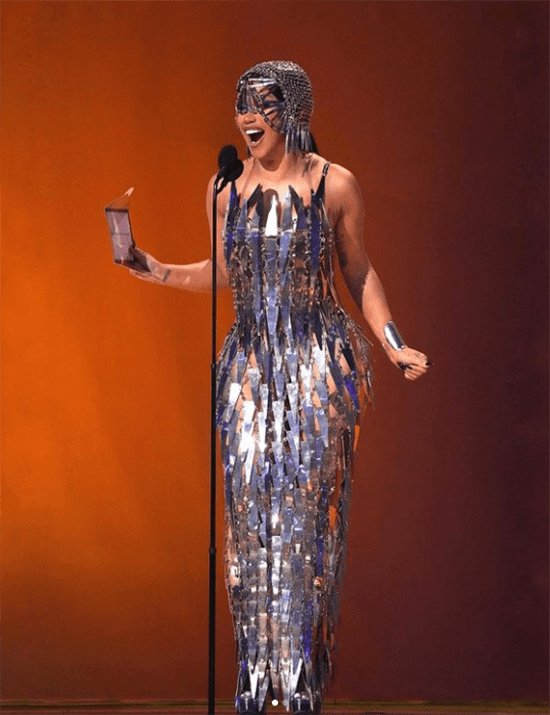
That same year, he retired from fashion and was rarely seen in public. He led an austere life, dressed in monastic simplicity, owning few material possessions and supporting Benedictine-run hospices for AIDS sufferers.
In 2005, in Moscow, he opened the first exhibit of his drawings, one of which—a child releasing a dove and a white balloon into the sky—was inspired by the commemoration ceremony for the 2004 Beslan attack in which 319 hostages that included children were killed. He bequeathed the sales for the drawing to the women of Beslan.
His legacy lived on at the fashion house bearing his name—Manish Arora took over as designer in 2011, Lydia Maurer in 2012, and Julian Dossena from 2013 to the present.
With Dossena’s takes on subversion, experimenting with materials and the latest technology as he pushes design solutions for modern life, he could very well be heeding the words of the late designer that guides him as he forges the future: “I have always had the impression of being a time accelerator—of going as far as is reasonable for one’s time and not indulge in the morbid pleasure of the known things, which I view as decay.”



